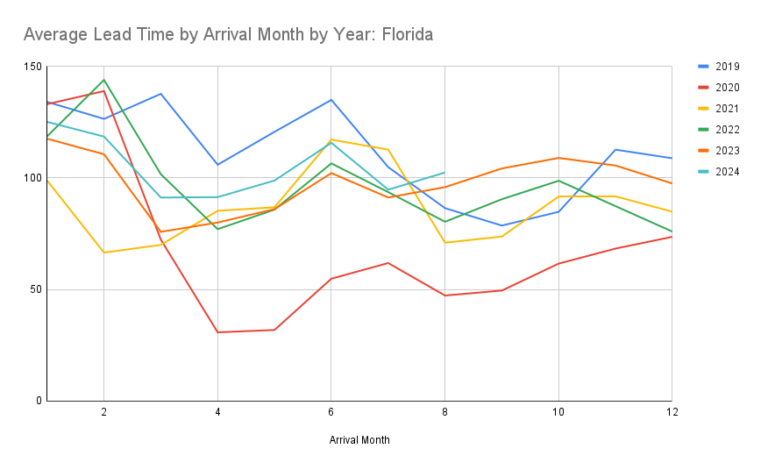What is an eCommerce AI Platform?
Artificial intelligence (AI) has become one of the hottest topics in business today.
Generative AI – like ChatGPT and Creative.AI – help to create original written or visual content.
However, apart from producing content automatically, what are the practical AI applications that help DTC brands drive more conversions?
It’s called an eCommerce AI Platform. It is AI that converts.
Today, direct to consumer brands struggle with rising ad costs, non-stop competition, bandwidth restrictions, economic downturns, and changing supply chain paradigms.
It’s more important now than ever before to layer automation throughout conversion rate optimization (CRO). AI-powered automation makes CRO more intelligent, driving big performance growth in less time with lower costs.
The story is simple: Consumers see your ads, influencer content, or search results and make their way to your site. But most are anonymous, and they tend to lose attention in seconds. Your site isn’t calculating and adapting in real-time to make sales.
Without AI that converts, your customer experience will face:
- stagnant conversion rates,
- poor product discovery,
- flat-line AOV,
- and less relevant experiences for consumers.
In this clear-cut guide, we’ll teach you exactly what an eCommerce AI Platform is; how to get started with one; and why they are so valuable today.
eCommerce AI Platform definition
eCommerce AI Platform
[ ˈēˌkämərs • ˌāˈī • ˈplatˌfôrm ]
An eCommerce AI Platform optimizes conversion rates and order value for direct-to-consumer brands by aggregating product, customer, web, and marketing data and dynamically adjusting shopping experiences through all channels.
Predictive AI deals with making accurate predictions or forecasts about future outcomes based on past data.
Its algorithms recognize extremely complex patterns and correlations within data to produce highly accurate results, which are used to improve current and future operations.
An eCommerce AI platform uses predictive AI to look at online user behavior and purchases in order to predict what products, images, text, and results are most likely to lead to transactions.
Behind the scenes is a robust factory of infrastructure, machine learning models, and data processing. The output: automated CRO across website and marketing touchpoints.
Predictive Personalization – for example – is just one way eCommerce AI can optimize for individuals.
Similarly, using a product-similarity matrix or geography based optimization are other tactics that can be deployed.
eCommerce AI can optimize based on numerous factors and correlations in the data that ultimately lead towards conversions and revenue.
How eCommerce AI Platforms works
It’s fairly straightforward to understand. Let’s break down how an eCommerce AI Platform works.
1. Machine learning and artificial intelligence processes eCommerce data
Behind the scenes the Predictive AI engine organizes and processes web and transaction data for all customer journeys: for those that convert, for those that do not, and everywhere in between.
Mathematical models determine the correlations that result in accurate predictions of product preferences, price sensitivity, and conversion likelihood based on thousands of possible variations.
2. Integration of eCommerce AI Platform into web and marketing
The AI platform is plugged into the front-end of the DTC site and into email sending tools, SMS tools, and other supporting tools.
The AI uses the predictions from phase 1 to place optimized content, results, recommendations, and more in front of web shoppers or marketing audiences.
This process happens automatically, making the determination in real time for what content or tactic will help that next person add the product cart.
Some examples:
- When the data says personalization is the best path, the AI will personalize one-to-one.
- Where enough about geography, device, and UTM sources is known: the AI prioritizes the products that convert best for the matching patterns.
- When the AI calls for Frequently Bought Together optimization, that tactic is deployed dynamically.
- If the digital context is most appropriate for micro-experiments and iterative A/B tests: the AI acts accordingly.
- In some cases the best chance of conversion might even be simply surfacing a smattering of Best Selling Products.
3. A feedback loop makes artificial intelligence less “artificial”
All interactions – cart-adds, searches, clicks, purchases, abandonment – enters a feedback loop to re-train the predictive AI models for even more accurate predictions.
Unlike Generative AI, which can produce a new piece of original content upon request, an eCommerce AI Platform runs micro-tweaks and micro-experiments in real time to add nuanced optimization day in and day out.
It’s what makes it “AI that converts”.
Instead of predicting just one shopping experience that should work well, the AI learns which experience works in every circumstance. Plus, where tiny variations convert better for other situations or users.
Bonus: Powering an ecosystem of DTC tools with AI
Beyond the optimization that can happen directly on your website or in your owned email marketing programs, an eCommerce AI Platfrom can integrate with a wide set of other technology solutions to make every decision more intelligent.
For example, software made to power one-click purchases over SMS can integrate with the AI platform to tweak the SMS content per user.
Another case: enterprise content generation for product descriptions and PDP material can further extend value with AI-backed decision making and personalization.
The use cases for AI designed for eCommerce are ever-growing.
Benefits of eCommerce AI Platforms
Platforms like Amazon, Booking.com, and Google use predictive AI to show relevant results to each person: what she is expected to want; what might catch her eye; what she is likely to purchase.
It’s not confusing to understand why they do it: it’s because it works.
It transforms consumer touchpoints into revenue drivers: product recommendations, in-cart upsells, site search, dynamic merchandising, variable price promotions, abandonment emails –– even product descriptions.
As a result, eCommerce AI Platforms generate more engagement, more sales, and higher order values.
Real Life Example
Men’s apparel retailer Bearbottom Clothing deployed eCommerce AI across their DTC site because their CMO has very high performance standards.
They used the predictive AI engine to layer intelligent site search into their store, and disseminate AI-powered product recommendations and merchandising to increase engagement.
And as a result: 17% higher clickthrough rates and 39% higher AOV.
Read the Bearbottom Clothing success story.
3 Ways eCommerce AI Platforms Create Value
Now that we’ve established the fundamentals, let’s look at how it creates value.
1. Recommendations that go beyond “just for you”
Product recommendations are one of the most critical DTC touchpoints for CRO. Period.
While most product rec tools use “frequently purchased together” logic, rules-based logic, or promote the best sellers within a given category… eCommerce AI Platforms do all three. And more.
Depending on the circumstances (who, what, when, where, why, how, context, environment, technical details) – the best way to optimize recommendations might be different.
An eCommerce AI platform will select the best methodology for maximizing conversions, enabling an even more intelligent optimization process that creates higher AOV and ROAS.
2. Product discovery
Product discovery is a critical part of the shopping experience, at least if a brand wants to increase the likelihood of turning traffic into sales.
Website search is one of the pillars of product discovery. Yet the eCommerce search functionality regularly leaves shoppers frustrated and empty handed.
eCommece AI Platforms transform a search bar into a search engine. Imagine if all of the power of machine learning and predictive intelligence behind Google Search was present on your website.
That’s what an eCommerce AI Platform can do for DTC sites. Turn any query into a contextually relevant search experience.
This results in more clicks, exploration, cart-adds, and purchases. That’s what the AI is optimized for.
3. Results driven merchandising
Merchandising with eCommerce AI boils down to one thing: results.
AI-powered merchandising does something very simple: it figures out what experience is most likely to lead to higher profit, higher conversion rates, and higher AOV.
How? Predictive AI and micro-experimentation for every site visitor.
Because AI is the decision making engine behind optimizing merchandising performance, it can also ingest other business context data that makes the solution engineered for each business. Some examples:
- When products have different costs or margins, the AI can deploy a different set of logic to optimize towards profit margin. The impact: selling more high-margin products and focusing on profits.
- If you sell a mix of 3rd party versus in-house branded products, the AI can include those inputs as factors to optimize for business goals.
- When brands have a more complex operation – with customized products, bundles, marketplaces, or external integrations – the AI can take advantage of the additional data to maximize performance on custom priorities.
Getting started with an eCommerce AI Platform
Manual or elementary website CRO poses a big risk.
Leaving your critical touchpoints on web and email in the control of out-of-the-box tools, simple point solutions, and manual tests has been causing problems for years: creating stagnant or declining AOV, ROAS, and CVR.
As a solution, predictive AI uses real time & historical context about every anonymous website visitor and known customer to automate and personalize CRO & product discovery.
And launching is simple.
So, how do you get started?
Aidaptive can get our eCommerce AI Platform live on your website in just a couple of days.
Integration is simple. Just a few clicks to get your Google Analytics account setup, connect your eCommerce platform – Shopify, Bigcommerce, Commerce Cloud, etc – and your email sending platforms and CRMs: like Klaviyo, Hubspot, or Salesforce.
The Predictive AI – and especially the machine learning models – will take some time to learn shopper behavior and how to optimize against conversion goals given website behavior on your store.
Then simply toggle it on behind the scenes of your eCommerce platform or PMS.
If you’d like to schedule a chat, reach out to our team! We’ll answer your questions and help you set up a test to make sure the AI is projected to materially boost revenue.



